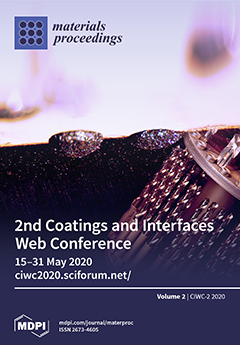Based on the 2019 report of the European Environment Agency on Air Quality in Europe nitrogen oxides (NO
x) were identified as the most harmful air pollutants in terms of damage to ecosystems. Moreover, in Europe, NO
2 is pinpointed as one of the most dangerous pollutants for human health. Anthropogenic emissions of NO
x are mainly generated by the combustion of fossil fuels. Nitrogen oxides being emitted into the atmosphere cause environmental problems such as acid rain, acidification of soil, lakes and rivers, eutrophication and photochemical smog. The most effective and widely applicable technology to date for the purification of flue gases from NO
x is selective catalytic reduction using ammonia (NH
3-SCR de-NO
x). Nowadays, one of the most significant research fields in NH
3-SCR de-NO
x is the application of unconventional reduction methods and the preparation of novel catalysts possessing high specific surface area, uniformity, dispersion of active sites, activity and selectivity. Atomic layer deposition (ALD) is an attractive technique for the deposition of uniformly distributed active catalytic layers, or nanoparticles, on highly porous substrates characterized by a complex structure. For this type of materials, conventional catalyst preparation methods (e.g., impregnation or deposition precipitation) can encounter several limitations. The significant advantage of ALD for the preparation of supported catalysts is that the process can be controlled on the atomic scale, providing the required thickness of an active layer, synthesized with a sub-nm accuracy. Moreover, ALD ensures the formation of catalytic sites from the gas phase, which enhances the possibility of active species being deposited inside pores which are very small in size. In this study, ALD was applied to the preparation of V
xO
y-based NH
3-SCR de-NO
x catalysts. Highly porous silica gel powder (63–100 μm) with a specific surface area of up to 450 m
2·g
−1 was used as a substrate for V
xO
y/SiO
2 with different metal loadings (wt.%). In addition (V
xO
y+TiO
2)/SiO
2 catalysts were prepared by applying vanadium (V) tri-i-propoxy oxide (VTIP) and titanium tetrachloride (TiCl
4) as precursors with deionized water as the co-reactant. Elemental analysis (ICP-OES) revealed that vanadium loadings of the V
xO
y/SiO
2 catalysts were 0.3, 0.7, 1.1 and 1.60 wt.%, while the loadings in the TiO
2-promoted V
xO
y/SiO
2 catalyst were 1.0 and 0.2 wt.% for V and Ti, respectively. The obtained XPS spectra indicated the presence of V
2O
3 and V
2O
5 species (V
2O
5/V
2O
3 ratio was 1.6 and 6.3 for the as-synthesized and calcined samples respectively). Vanadium(V) oxide is known to be a catalytically active compound for NH
3-SCR de-NO
x. Additionally, TEM, XRD and N
2 adsorption (BET) analyses were conducted to provide a comprehensive characterization of the species size, crystalline phase and porosity of the catalysts prepared.
Full article



